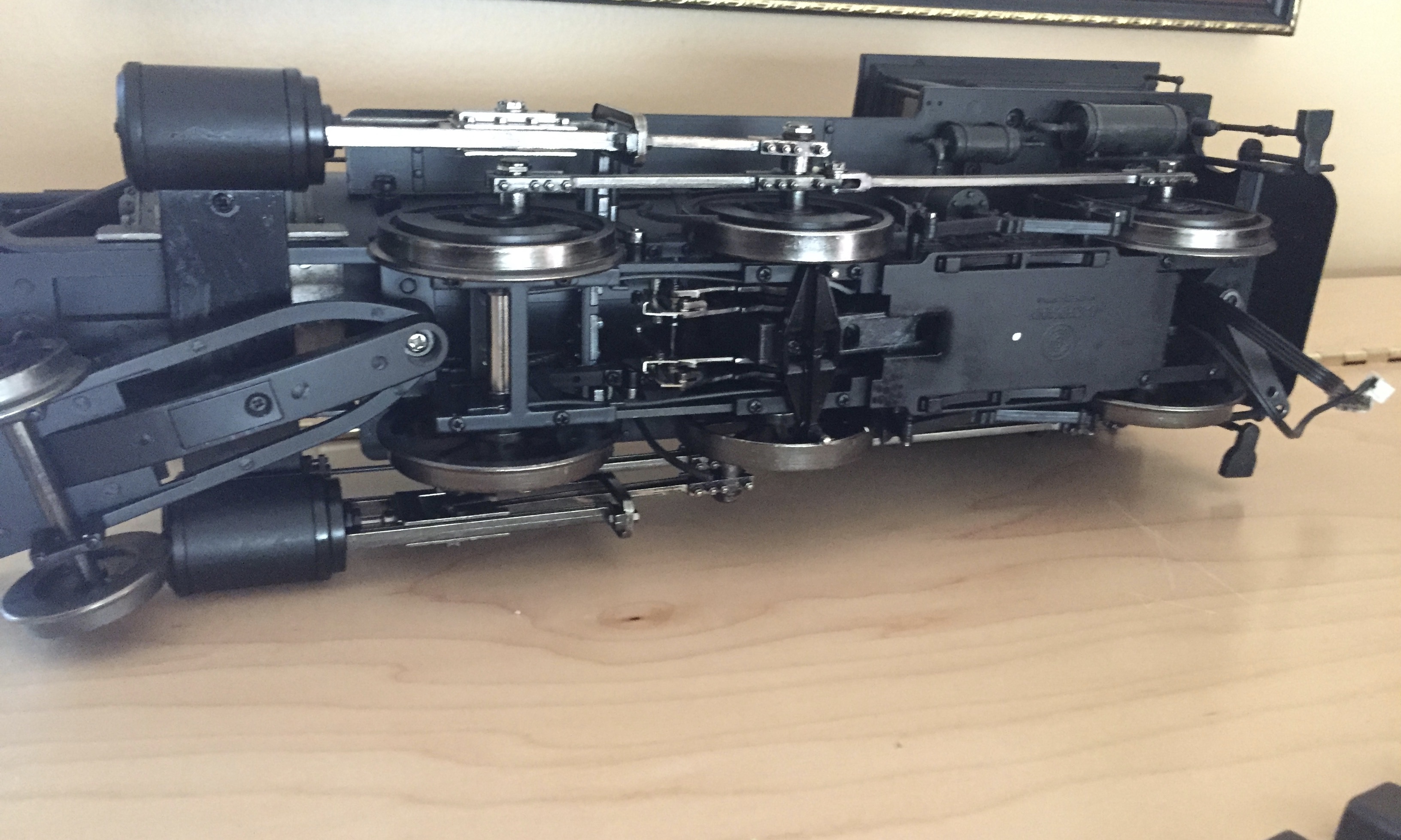LSC Friends: I did not an answer to this question on an existing discussion thread, so i am starting this new thread for your input. finally closed the mainline loop of my g scale backyard layout using USA solid brass track and switches. The first locomotive I am using is a Bachmann Spectrum 2-6-0 Mogul on battery power. The locomotive runs great on the track including curves from 8’ to 20’ diameter. However, here is my dilemma. Most of the switches I purchased to use on this layout plan are 8’ diameter USA Trains solid brass rail switches. I noticed right away on the very first run that I had to hit these switches at half throttle or more to get the locomotive to not stall on the straight path of the switches. But then when I tried to run the locomotive through the divergent path of a switch onto the passing siding, forget it - the locomotive got completely hung up and caught in the switch. I did try tinkering on one switch by prying open the space between the guide rails and main rails as well as the frog, which helped somewhat. But I was afraid to do too much and damage this expensive switch. All of the cars go through the switch just fine, but the locomotive will not make it. I do have a #6 switch on the layout, and the loco made it through both paths of this switch at half throttle or better, but still wanted to stick somewhat.
So my question is this - has anyone encountered this issue with the USA 8’ diameter switches, and what did you do to fix the problem. Can the spacing between the guide and main rails be readily ground out, forced apart or some other fix to permit my locomotive to run through freely, or should I scrap the idea of using 8’ diameter switches and go to #6’s?
Any thoughts, advice and recommendations relative to this problem is appreciated!
Mark

